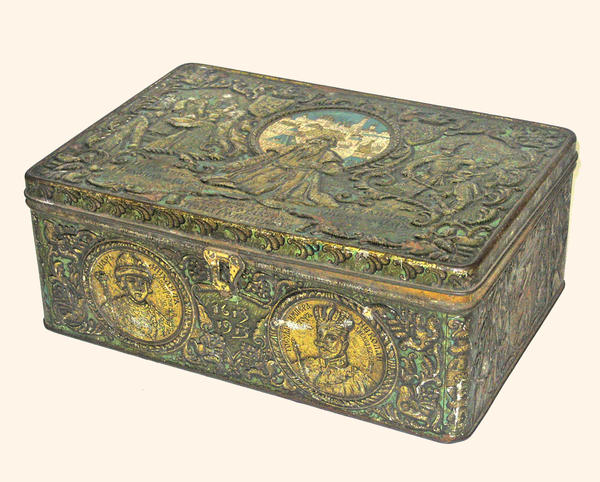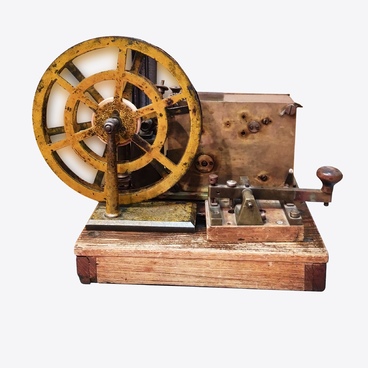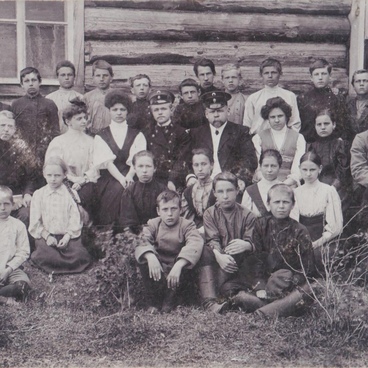In the collection of the Kotlas Museum is a box for confectionery products produced by the Partnership of the Renome Confectionery Factory, Moscow. The box is designed to commemorate the 300th anniversary of the House of Romanov. It shows historical episodes and royal persons, including Mikhail Románov, Emperors Alexander and Nikolai.
Chocolate, invented in North America, managed to gain popularity at the courts of European kings within a hundred years, appearing in Europe in the middle of the 16th century. In the 17th century, chocolate became the most fashionable delicacy among the nobility. ‘Chocolate mania’ came to Russia a little later.
There are still controversies about how and when chocolate appeared in Russia. According to one version, it, like everything else in the West, was brought to Russia by Peter I. According to another version, cocoa beans and a recipe for making hot chocolate were brought to Russia by the Venezuelan ambassador Francisco de Miranda, who arrived in Kherson in 1786. Immediately upon arrival, he was introduced to the favorite of the Empress, Prince Grigóry Potémkin, and in 1787 to Catherine II herself, in Kiev. Soon the imperial court placed an order for cocoa, and thus hot chocolate conquered another state — the Russian Empire.
The 19th century could be called the age of chocolate in Russia. St. Petersburg, Moscow, Nizhny Noóvgorod, Khárkov — the leading ‘chocolate’ cities in the pre-revolutionary period — were literally packed with chocolate shops, shops and industries. Chocolate was sold both by weight and by the piece, and in the Pfeifer confectionery in St. Petersburg you could buy ‘knick-knacks’ constructed from chocolate.
Little attention was paid to packaging design in Russia until nearly the end of the 19th century. Only the rapid development of lightweight construction and the food industry, as well as the emerging competition between Russian and European goods, forced domestic entrepreneurs to pay serious attention to the appearance of packaging. Even then, the buyer typically had confidence in those goods which were in solid and elegantly designed boxes, cans and cases. Tin packaging appeared in Russia in the 1880s.
Boxes similar to this one were made to order. Initially, tin boxes were decorated with pasted chromolithographic labels. Chromolithography is a printing method in which a pattern is initially applied to the surface of a special stone. Later, illustrations and advertising began to be applied in the same way, but directly onto a tin, that is, using metallo-chromia.
There are still controversies about how and when chocolate appeared in Russia. According to one version, it, like everything else in the West, was brought to Russia by Peter I. According to another version, cocoa beans and a recipe for making hot chocolate were brought to Russia by the Venezuelan ambassador Francisco de Miranda, who arrived in Kherson in 1786. Immediately upon arrival, he was introduced to the favorite of the Empress, Prince Grigóry Potémkin, and in 1787 to Catherine II herself, in Kiev. Soon the imperial court placed an order for cocoa, and thus hot chocolate conquered another state — the Russian Empire.
The 19th century could be called the age of chocolate in Russia. St. Petersburg, Moscow, Nizhny Noóvgorod, Khárkov — the leading ‘chocolate’ cities in the pre-revolutionary period — were literally packed with chocolate shops, shops and industries. Chocolate was sold both by weight and by the piece, and in the Pfeifer confectionery in St. Petersburg you could buy ‘knick-knacks’ constructed from chocolate.
Little attention was paid to packaging design in Russia until nearly the end of the 19th century. Only the rapid development of lightweight construction and the food industry, as well as the emerging competition between Russian and European goods, forced domestic entrepreneurs to pay serious attention to the appearance of packaging. Even then, the buyer typically had confidence in those goods which were in solid and elegantly designed boxes, cans and cases. Tin packaging appeared in Russia in the 1880s.
Boxes similar to this one were made to order. Initially, tin boxes were decorated with pasted chromolithographic labels. Chromolithography is a printing method in which a pattern is initially applied to the surface of a special stone. Later, illustrations and advertising began to be applied in the same way, but directly onto a tin, that is, using metallo-chromia.



